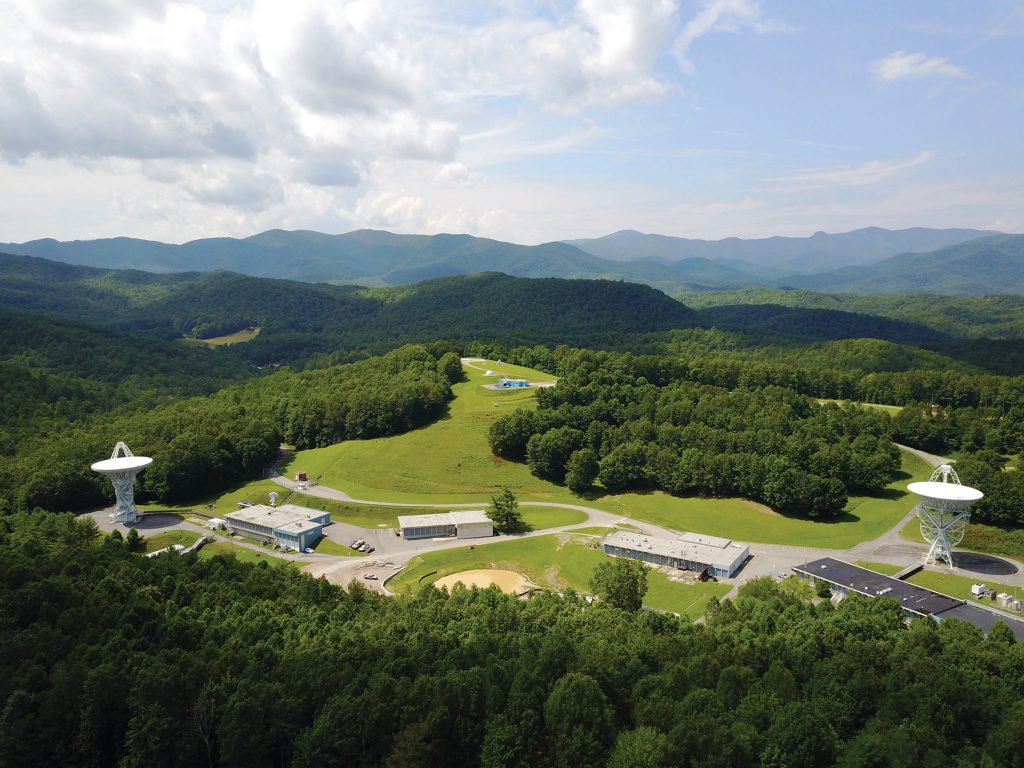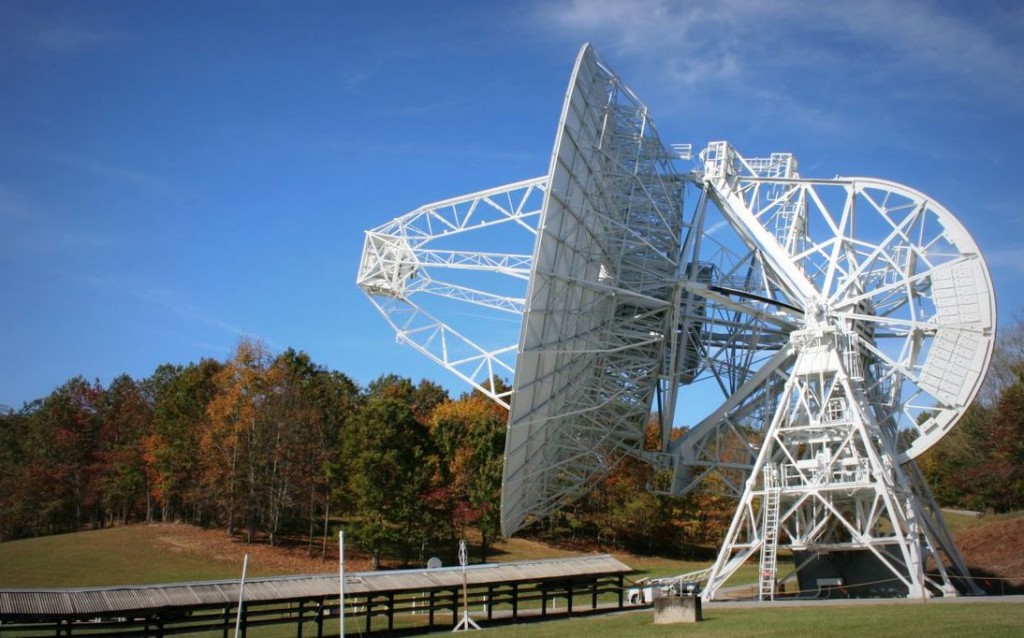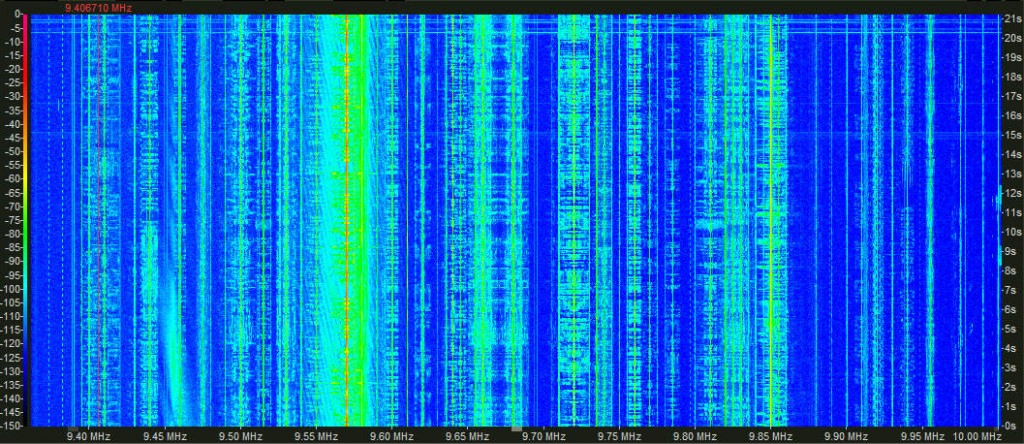Tomorrow, we will be experiencing a total solar eclipse here in the mountains of western North Carolina.
Instead of enjoying the eclipse at home, I will be volunteering as a docent at the Pisgah Astronomical Research Institute in Rosman, North Carolina. Post readers might recall PARI as it was the location of our 2015 PARI DXpedition.
PARI is expecting at least 1,000 visitors tomorrow, from a number of countries. Many are scientists, astronomers, and guests who want to be in the path of totality.
On the PARI campus, we will be in totality for about 1 minutes, 47 seconds.
What makes the event truly special for PARI is that this is the first time in history a world-class radio astronomy observatory has been in the path of totality. To say the PARI astronomers are excited is simply an understatement. All four of PARI’s telescopes will be trained on our local star and gathering copious amounts of data.
If you don’t live in the path of the Eclipse, I invite you to check out PARI’s YouTube channel where they will host a live stream:
Click here to watch on YouTube.
Gathering spectrum
I will also be gathering data of my own during the event.
I will remotely record the entire mediumwave (AM broadcast) band several hours before, during and after the eclipse. I will also set up a separate SDR to record either the 31/30 meter bands and my buddy, Vlado (N3CZ) is kindly using his SDRplay RSP1 to record from 6 MHz – 8 MHz.
What do I expect to see/hear in the spectrum recordings? Certainly a drop in noise. If I’m lucky, I also hope to hear some DX anomalies–hopefully a signal or two that I wouldn’t normally here in the middle of a summer day.
I don’t expect any dramatic results (though I would love to be proven otherwise!) since the ionosphere takes time to change states. My buddy Mike (K8RAT) likens it to an oven: it takes time for it to heat up to the desired temperature, and it takes time for it to cool down as well. I’m not so sure the shadow of the moon, which moves at a good clip, will be persistent enough to change the state of the ionosphere in any meaningful way.
If it does, I’ll be there to record it!
There are many other radio related experiments happening during the solar eclipse. A notable one that you can even help with is the 2017 Ham Radio Eclipse Experiment.
SWLing Post contributor, Dan Srebnick also suggests a few stations you might try catching on the AM broadcast band. Dan notes:
Something to do during the solar eclipse on Monday. There are 13 clear channel AM stations along the path of totality. Give a listen for them:
[LIST OF AM CLEAR CHANNEL STATIONS]
kHz CALL Location Eclipse UTC
—— ——- —————- ————–
650 WSM Nashville, TN 18:28
670 KBOI Boise, ID 17:27
750 WSB Atlanta, GA 18:36
840 WHAS Louisville, KY 18:27
880 KRVN Lexington, NE 17:57
1030 KTWO Casper, WY 17:43
1040 WHO DesMoines, IA 18:08
1110 KFAB Omaha, NE 18:04
1110 WBT Charlotte, NC 18:41
1120 KPNW Eugene, OR 17:17
1120 KMOX St. Louis, MO 18:18
1190 KEX Portland, OR 17:19
1510 WLAC Nashville, TN 18:28Kudos to Bob WB4APR (of APRS fame) for producing this list.
Post readers: Will you be in the path of totality or do you plan to enjoy a partial eclipse? Have you ever experienced a total solar eclipse? What are your plans if any? Please comment!




I also recorded the AM BCB. (DC-2MHz with a SDRPlay RSP1 and 320-foot center-fed antenna) My location is 25 miles northwest of Nashville.
I’m still reviewing the recordings — that’s a LOT of data and I have a full-time job that has nothing to do with the ionosphere:) I’m working in frequency order; so far I’ve made it to 1240KHz.
In general… Signals from the west began to fade in a few minutes before totality at my location. (and well after the partial phase began) Western signals would eventually fade out and be replaced by signals from the east. Eastern signals would fade out well after totality — as much as a half-hour after totality. So far the most distant signal heard to the west is WHO Des Moines, Iowa; most distant broadcast signal to the east is WWVA Wheeling, West Virginia. (I took a quick check of the 160-meter ham band and heard a London, Ontario station)
There may be more surprises in the land above 1240.
I understand, Doug. For me, reviewing the MW spectrum is loads of fun, but takes a lot of time! I’m have trouble fitting it in my schedule.
Still, this past weekend, I did explore the frequencies between 1600-1700 kHz. I’m located near Asheville, NC, and logged strong stations in Macon, GA, Orlando, FL and even Miami, FL. The Miami station is at least 700 miles south of my location.
I watched the eclipse from a drive-in theater in Maryville, (near Knoxville), TN. I DXed with a car radio (Pioneer model that’s standard in and an Eton portable (one of those Red Cross crankable/solar specials. I noted 570 getting a little “sunsetty” around 2pm (normally I have a weak WWNC with WIDS, Russell Springs KY underneath. . By 2:20 I was getting a strong signal from KXEL, Waterloo, IA . The “graveyard” channels (1230, 1240, 1340, 1450 and 1490 –1400 is also one but had a strong local). sounded like night (or at least sunset), and most regional channels in the upper part of the band had multiple stations under regionals. The real action was on the expanded AM band (past 1600). There was something on most of the frequencies, most of which was in network programming. I positively IDed WVON, Chicago on 1690 (after totality), as well as WSJP, Sussex WI on 1640. WLAC-1510 came in after totality (which surprised me). Last station IDed at about 3pm was WRDW, Augusta GA. Looking forward to the full SDR report.
I agree with you that it appeared to have the biggest affect on the upper end of the MW band.
In my case one of the issues was the number of daytime-only stations here in SoCal on the so-called “clear channels” and also probably some issues with the day time directional patterns of all of the stations. At my QTH I also have issues with being close to a number of the local stations, on both sides of the border!
My big regret was not using an SDR to capture the data for future analysis!
This was a slightly disappointing eclipse DX event for me, for multiple reasons. First, my makeshift horizontal loop failed to work properly (then fell off the fence all on its own!) so I had to go back to my 30 foot rando-wire up in a nearby tree since it works better on the AM BCB versus the tilted terminated dipole we use for SW. Just as I got everything hooked up the way I wanted it, naturally it started thundering and lightning. So much for the “good eclipse viewing conditions” our local TV weather guy predicted. It clouded up and so it was hard to tell just how dim the skies got at the peak.
A geomagnetic storm also seems to be blitzing the SW bands, as I was unable to hear anything except Radio Martí, WWV on 15 MHz and WRMI’s 9455 kHz broadcast with any reasonable clarity leading up to the moment of totality. Normal afternoon stalwarts like WINB, Oman, Cuba, RNE and Radio Saudi were either almost completely inaudible or completely gone.
It wasn’t until after the peak of the eclipse that things really started to happen here. The AM band eventually did open up, but only from about 1100 kHz on up. I did confirm WLAC from Nashville and KRJO Monroe, LA. I’m also pretty sure I had WHIY from Huntsville on 1600 kHz and 1700 KVNS Brownsville, TX, along with 1180 WJNT Jackson, MS. But as quickly as those showed up, they left, staying audible for maybe seven minutes, tops.
The only anomaly on shortwave was a brief (also about ten minutes) burst of a paint-peeling signal from WRMI’s 21525 kHz broadcast to Africa, something I rarely rarely hear here even in the best of conditions. It was peaking at S9+30 but had deep quick fades. After about ten minutes, it dropped off from 30 over to no trace of a carrier in less than 45 seconds.
I had fun doing some radio monitoring of the eclipse from San Diego. We only had 60 percent totality!
I found that there were greatly enhanced conditions in San Diego from Asia on the 49 and 41 mb during the eclipse! Didn’t get any signals below that.
Despite my high local noise level, they faded in starting at around 1640 UTC. Both the 49 and 41 mb opened-up with many signals from China, Taiwan, Japan and Korea, many well over S-9!. Seemed to peak around 1700. Many still on at 1730 but all gone by 1745. At just after 1700 there was a big open carrier on 6195 kHz (S9 +20dB) with no modulation. Kranji tuning up for Tuesday morning?
WWV had enhanced signals on 5 and 10 MHz MHz (peaked later than Asia). 2.5 MHz not noted.
KNLS and WWCR came up on their 31 mb channels (of course KNLS before WWCR).
I tried for some of the San Francisco MW stations (which are normally audible here at night) but nothing heard and/or there are daytime stations on their channels. However, KFBK 1530 in Sacramento did fade in and had a decent signal until around 1745.
Bob LaRose W6ACU San Diego
We had 78% totality at my location in northern California. The sun was reduced to a crescent sliver and sunlight dimmed, but there was still plenty of daylight. Crescents could be seen projected by sunlight passing through trees. I listened to all SW bands from 90 minutes before until 90 minutes after the eclipse and noticed nothing out of the ordinary. Numbers station “la Chica” and the jammer “Firedrake” were both busy.
This is probably the first eclipse in which SDR is within the reach of most hobbyists and it’s a great idea to be able to record the effects, if any, on the bands during this momentous event. Eagerly awaiting the results. Gentlemen, start your radios!
Hello
I was living in Sao Paulo, Brazil in the early 90’s when we had a total eclipse of the sun around 11:00am.
I tried several shortwave bands and noticed a dramatic change on the lower bands, particularly 90 and 120 meter bands.
In those days there were a few brazilian stations transmitting on those bands that were not possible to be heard during the day, usually only after 5.00pm, however in that occasion I could heard one of them very clearly for about 5 – 10 minutes transmitting on 2420 kHz. The station was about 300 km away from my house.
Since I live in California, should I try 1120 KPNW Eugene, OR and 1190 KEX Portland, OR?
What do you think they’ll broadcast?
Are there any other stations I should try?
“Clear Channel” AM stations haven’t existed in the USA for decades. The current Class 1 AM stations are often called “clear channel” now but they have limited protection areas and those protections apply only at night. I live in northern California about 70 miles inland from the SF Bay Area. I can hear 1190 KEX on the 909X easily at night but during the day I receive KDYA on 1190. They are in Richmond, CA.
If things go according to plan, I’ll also be on MW and maybe some of the low bands on SW to see if anything pops in during the partial blackout. I think we’re going to be around 70% here, although storms are expected.
I’ve witnessed totality just once, from Los Cabos, BCS on July 11, 1991. It was the most awesome natural event I’ve ever experienced. Videos and pictures simply do not capture what can be seen with your own eyes. I wish you success in seeing totality during tomorrow’s eclipse.
That is neat. In South Central PA we’re supposed to have 76% eclipse coverage, weather permitting I plan to be out watching it, weather permitting.
At my QTH I will have my Winradio G33DDC set up to record a chunk of sprectrum. I can’t remember such hoopla and news coverage on a space event here in the US since we landed a man on the moon! Incredible!